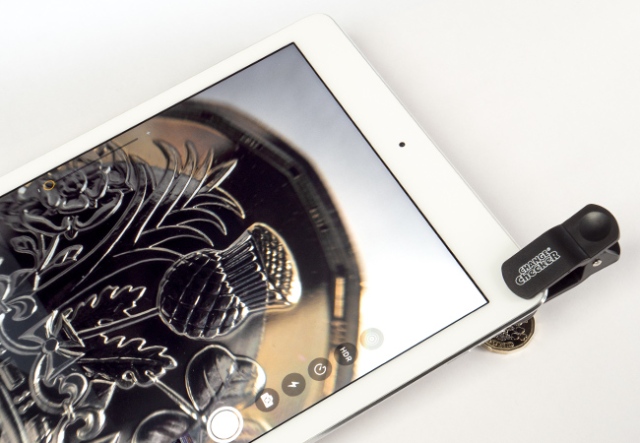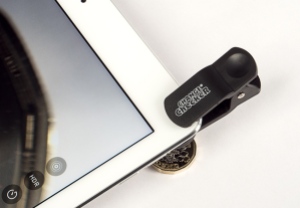Posts Tagged ‘12-sided £1’
Spot the difference! Variations in the 12 sided £1 explained.
A common query we’ve been hearing at Change Checker HQ comes from people asking about variations in their 12 sided £1 coins.
Having read David Groom’s fascinating articles in the April and May issues of Coin News, we’ve found the key facts which explain these variations, what to look for and why they might have occurred.

We know that of the 1.5 billion 12 sided £1 coins struck to replace the old round pound, roughly half a billion are dated 2016.
Of course, having such a high mintage figure must lead to varieties in design and quality of striking, however in the Coin News examination of just 40 randomly selected 12 sided £1 coins, an extraordinary number of varieties appeared…
Edges
Perhaps the most talked about variation with the 12 sided £1 is the milling on the edge of the coin, with ‘lefties’ being a common error in the milling process.

Variations showing milling to the right. Credit: Coin News

Variations showing milling to the left. Credit: Coin News
Obverses
Groom’s article suggested four clear variations can be found on the obverse of the coin, including position of the design and text.

Variations in the gap of the ‘T’ relative to the edge of the inner ring. Credit: Coin News

Variations in the position of the truncation relative to the edge of the inner ring. Credit: Coin News

Variations in the tip of the diadem relative to the edge of the inner ring. Credit: Coin News

Variations in the gap of the ‘D’ relative to the inner ring. Credit: Coin News
Reverses
Groom also highlighted the four clear features of difference for the reverses of the new £1 coins.

Variations in the gap of the ‘D’ relative to the inner ring. Credit: Coin News

Variations in the gap of the ‘DP’ relative to the inner ring. Credit: Coin News

Variations in the position of the leek relative to the edge of the inner ring. Credit: Coin News

Variations in how the rose is intersected. Credit: Coin News
Misalignment
One of the most common variations seems to be misalignment of the coins, particularly where the outer and inner sections do not align properly.

Variations in alignment. Credit: Coin News
Dates
We have spoken before in our blog about the dual-dated £1 coins, with one such coin being valued at £3,000.
Groom also mentions that many examples of the 2016 pound coin have the date numbers very poorly struck, making the date hard to read.

The date on some 2016 £1 coins have been poorly struck. Credit: Coin News
Royal Mint trial coins
Trial coins are issued when new coin specifications are being tested, but they should not enter circulation.
These feature the words ‘The Royal Mint’ and ‘Trial Piece’.

Credit: eBay: Rare £1 coin – new 12-sided trial coins sold for £500
Whilst there are clearly a number of variations to be found in the 12 sided £1 coins, Coin News suggests that these may arise from off centre striking, or be due to the different characteristics from the two metals of the bimetallic coin.
Auction sites such as eBay may have sellers claiming these as ‘error’ coins, with listed prices rising to hundreds or even thousands of pounds, but for us Change Checkers, finding these variations in our coins is what makes collecting that much more interesting.
Many of you have been in touch telling us about the difference in your 2016 and 2017 12 sided £1 coins. Have you spotted any of the above variations in your coins?
– Credit ‘Up close, the new 12 sided £1 coin’ – David Groom, Coin News, April and May 2018
If you’re interested in coin collecting, our Change Checker web app is completely free to use and allows users to:
– Find and identify the coins in their pocket
– Collect and track the coins they have
– Swap their spare coins with other Change Checkers
Sign up today at: www.changechecker.org/app
Why the latest Royal Mint “error” is the hardest to find yet. Plus what it might be worth…
In 2017, following reports by Change Checker and in the national press that a die mix up at The Royal Mint resulted in a number of 12 sided £1 coins being struck with dual-dates, The Royal Mint officially confirmed the error.
However, this is one of the hardest errors ever to spot. That’s because even with 20/20 eyesight you will struggle to see the incorrect date on the coin’s reverse because it’s micro-engraved as part of the coin’s ultra-secure finish.

The error is so small, it cannot be seen with the naked eye.
What do I need to look for?
Firstly, although both 2016 and 2017 obverse-dated £1 coins entered circulation in April 2017, the die-error mix up appears to have only occurred on a limited number of coins with a 2016 date on the Queen’s head side.
So it’s worth checking any 2016 coins. You’ll need to look just inside the rim of the design-side of the coin, where you will see some tiny writing. You’ll almost certainly need a Microscope or Phonescope to properly see the writing, which should reveal the date.
You’re looking for a 2016 obverse-dated coin with 2017 micro-engraving on the reverse.
What if I can’t read the micro-engraving?
With over 1.5 billion new £1 coins being struck not all coins are finished perfectly. Unfortunately, a poorly struck example where you cannot read the micro-engraving is not of great interest to collectors.
What about other £1 mis-strikes and errors?
We believe this is the only known £1 error. Due to the huge number of coins that have entered circulation, there are a number of interesting mis-strikes, which, although numismatically interesting, have relatively limited collectibility or value.
More worryingly, there are a number of altered £1 coins for sale, claiming to have misaligned heads or similar unusual errors. However, both these are likely to have transgressed the Coinage Act by tampering with the coin and are clear minting impossibilities. STEER WELL CLEAR is our advice. Similarly beware of photographs that purport to show a genuine Dual-dated £1 coin – you need to be confident you’re not simply looking at two different coins.
So what is the Dual-dated £1 Coin worth?
This remains the most difficult question but let’s take a look at the available information.
- How many were struck?
The Royal Mint has given no indication of how many Dual-dated £1 Coins ever went into circulation – and it’s quite likely they do not even know. We have not seen any examples amongst our stock. Equally, 1,500,000,000 2016 £1 coins were struck and rates of 1,800 coins per minute were achieved at the height of production.
The key number seems to be how many coins The Royal Mint strike before they replace a die. Given the nature of the “error” it seems likely that it was only corrected when the die was replaced. Understandably, the number of coins The Royal Mint strikes with each blank is not something the Mint chooses to share for commercial reasons.
- What are the comparables?
The key to any valuation is what comparable coins sell for. The most obvious comparable is the 2008 undated 20p, which was caused by a similar die mix up. That sells online for between £50 and £80.
Other interesting UK errors include “Silver” 2p coins, which have sold in recent years for as much as £1,400 but these are considerably rarer relying on a few old 10p blanks being left over when a blank barrel has been filled with new 2p blanks. Another 2 pence error, when some DATE 2p pieces were struck using the old decimalisation dies with the word “NEW” in front of “PENCE”, currently sells for around £60.

The 2015 Rare ‘Silver’ 2p
- So what is the new Dual-dated £1 Coin worth?
We understand that at least one example was sold for £2,500 to a buyer in Spain in 2017, which probably marks the likely ceiling for value.
Probably more Dual-dated £1 coins have been struck than the 2p coins. However, the error is particularly difficult to spot due to the size of the micro-engraving. It’s also worth noting that interest in £1 coins is still very high and, of course, because they are relatively new in circulation, the chances of finding an all-important good quality version is high.
Bearing all that in mind, our best value estimate for a Dual-dated £1 Coin in excellent condition is currently £300 – £500.
Finding the coin in your change
We’ve heard from two Change Checkers lucky enough to find a dual dated error, one in October 2018 and one in April 2019.
I’m sure that the challenge of finding a dual dated £1 coin has sparked many Change Checker’s interest in collecting coins and I’m sure will encourage more collectors out there to look more closely at their £1 coins.

Dual dated £1 error coin found by a lucky Change Checker
If you’ve come across an interesting coin in your change, be sure to get in touch with us. We’d love to hear about the rare coins you’ve found.
Help find the Dual-dated £1 Coin with the Change Checker Phonescope
The Phonescope works by clipping onto a mobile device, and magnifying the camera, allowing you to take incredible close-up photos and videos.
Round £1 Coin transition date sooner than expected!
The Royal Mint initially predicted that the number of new 12-sided £1 coins in circulation would overtake the Round £1 Coin by August this year.

12-sided £1 Coins will overtake the Round £1 Coin by July
However, due to the amount of coins that have already been returned, 8 million in total, the date has been revised to as soon as late July. Of the returned coins, most will be re-used to produce new 12-sided £1 coins, with the rest being disposed of.
This is important news for industries that deal in large quantities of £1 coins, such as vending and arcade machines, who’ll need to bring forward their machine conversation date.
Most importantly, for Change Checkers this means it is going to become increasingly challenging to complete The Great One Pound Coin Race. However, we know that you love a challenge and we’re here to help you get across the finishing line.
For all the best Round £1 Coin collecting hints and tips, take a look at our video:
For the brave ones amongst you, you can still sign up to The Great One Pound Coin Race, there’s still over 100 days to go!
Good Luck!


